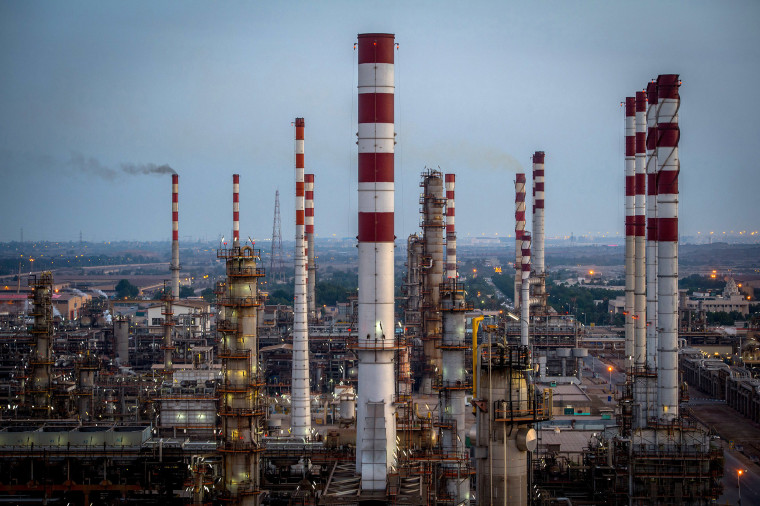Oil ministers from the world’s largest petroleum producers agreed to raise global production by 500,000 barrels a day beginning in January — a move that was viewed by oil analysts as a compromise after a rare rift between Saudi Arabia and the United Arab Emirates, another major producer that historically has aligned with its larger neighbor.
OPEC and its allies had resumed talks on Thursday, after suspending negotiations earlier in the week after an uncharacteristic breakdown of talks among officials on how to address the pandemic-induced slowdown in demand.
“In general, these end-of-year meetings have proven to be the more volatile of the semiannual OPEC conferences,” said Peter McNally, global energy sector lead at investment and research firm Third Bridge. “Reaching consensus is more complicated at the end of the year than mid-year when demand is typically increasing and output is raised to meet that increased seasonal market need.”
Oil markets have been roiled by the demand shock of the pandemic, which triggered such great volatility in the global oil market that, for a brief period in April, the price of oil futures — that is, the value at which a buyer would agree to purchase at a particular future date — fell below zero. Although primarily a technical headache for speculators, the inversion highlighted just how severe the oil glut had become.
In May, OPEC implemented a record-breaking production cut of 9.7 million barrels a day, which it changed to 7.7 million in August. Initially, the group laid out a plan to exit from that drastic 9.7 million barrel cut by increasing production by 1.9 billion barrels a day beginning in January 2021. More recently, though, industry participants had widely expected OPEC to extend its current level of production cuts through March — the preferred course of action for Saudi Arabia.
As the de facto leader of OPEC, Saudi Arabia has typically held considerable sway over the group’s actions, but Thursday’s announcement indicated to industry observers that the kingdom does not hold the influence it once did.
“It’s certainly an interesting chapter to see some cracks forming among OPEC’s core that could create some complexity in agreements to production cuts,” said Patrick DeHaan, head of petroleum analysis at GasBuddy.
Now numbering nearly two dozen, the members of OPEC and the other oil-producing nations that comprise OPEC+ have increasingly diverse agendas and concerns. “Friction is one thing — that’s routine in times of crisis. But ordinarily, they figure out a compromise and present a united front,” said Stewart Glickman, energy equity analyst at CFRA Research. “I think sticking to the original plan would have caused crude oil prices to plummet.”
These tensions, along with the ongoing pandemic, together paint a murky picture for American fossil fuel production. “The biggest problem continues to be Covid,” said Tom Kloza, global head of energy analysis for OPIS by IHSMarkit.
While demand for natural gas is likely to be robust through the winter as people staying at home turn up the thermostat — activity that is, in aggregate, less energy-efficient than heating large downtown and suburban office complexes — and the push to move social gatherings and dining outside has kept propane prices from cratering, Americans are collectively sipping rather than guzzling gasoline and jet fuel. This change, some suggest, could mark an inflection point for the industry.
A major breakthrough in electric-vehicle battery functionality or storage capacity would send shock waves through the oil-producing world.
“There a strong argument that gasoline demand will not reach its pre-pandemic levels,” DeHaan said.
“The American energy sector is bigger, but not necessarily better, today than it was the last time the market was in post-crash recovery beginning in 2016,” McNally said. Consolidation among producers and refiners has left the remaining players with less dry powder, cooling investor enthusiasm. In addition, analysts expect that under President-elect Joe Biden, the new administration will move to implement changes like higher fuel-efficiency standards and increased incentives for electric vehicle adoption, while plunging state and municipal revenues could prompt lawmakers to look at gas tax increases to plug budget holes.
Long-term, many analysts see the writing on the wall for OPEC, with an upcoming fundamental shift in the way countries produce and consume energy.
There is a growing sense that the biggest oil producers — especially those like Saudi Arabia with highly petroleum-dependent economies — are in a race against time as a growing number of developed nations accelerate their initiatives to reduce carbon emissions. A major breakthrough in battery functionality or storage capacity, for instance, would send shock waves through the oil-producing world.
“Longer-term, renewables have potential to take market share from fossil fuels, and that would bode poorly for OPEC,” Glickman said.
